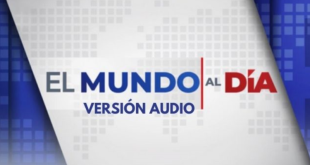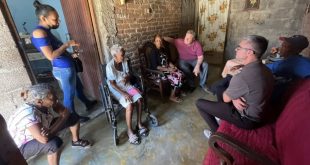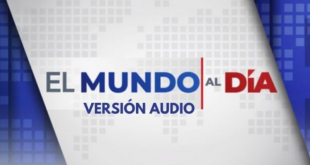If you are Cuban notified with I-220A and require or have requested a migratory forgiveness, it is important that you know this information.
The regularization of Cuban migrants in the United States has been one of the most debated issues in recent years, especially for those who are found Under the status I-220A.
This status, granted to those who have entered the country on bail, does not give them a direct path to permanent residence, which forces many to resort to migratory forgiveness, known as Waiver.
However, the process to obtain this forgiveness has generated growing concerns due to the waiting times that, in some cases, exceed 45 months.
Interest articles: Lawyer incites Cubans with I-220a to review their cases in the face of regulating their immigration status
FOIA: The legal secret that Cubans with I-220a or I-220b must know
What is migratory forgiveness or «Waiver»?
The migratory forgiveness, formally the form I-601A, is a tool that allows immigrants who have irregularly entered the US regularize their status, as long as they can demonstrate that their exit from the country would cause extreme suffering to their direct relatives, whether residents or American citizens.
The main obstacle to many Cuban applicants is the dilation of waiting times, which before the pandemic ranged around a year, but that have currently extended significantly.

In the case of Cubans found in this process, the approval deadlines of the Waiver They can exceed three years, creating a situation of uncertainty that affects not only applicants, but also their relatives.
How is migratory forgiveness requested?
Requesting forgiveness to the United States Citizenship and Immigration Service (USCIS) can be a crucial step to solve complicated migratory situations.
First, it is important to identify the type of forgiveness that is needed. There are several forms, the most common being form I-601 (request for exemption of causes of inadmissibility) and form I-601A (request for provisional exemption by illegal presence).
Depending on the specific circumstances, form I-212 for the re-entry permission may also be required after a deportation or forced output. Each form corresponds to different causes of inadmissibility, so it is essential to verify which applies to the personal situation.
Once the correct form is identified, the support documentation that demonstrates eligibility to receive forgiveness must be met. For example, in the case of an I-601 or I-601A, it is often required to verify that the denial of the exemption would cause «extreme difficulties» to an immediate relative who is a permanent citizen or resident of the United States. This evidence may include medical records, financial documents and letters of employers or community members confirming the dependency situation and the negative impact that would generate prolonged family separation.
It is also advisable to prepare a letter of explanation describing the circumstances that led to the violation of immigration laws and the genuine repentance is highlighted.
In addition, it should be detailed how the standards have been met since the infraction was committed and explain why it deserves a second opportunity to legally remain in the country.
How much does migratory forgiveness cost?
A key step is to pay the rates corresponding to the application. The fees may vary according to the type of form and, in some cases, a payment exemption can be requested if certain financial requirements are met. It is essential to send the complete application, with signed and correct forms, to the USCIS address indicated in the most recent instructions.
While it is not mandatory, having the advice of an immigration lawyer or an accredited representative can facilitate the process, as they can help collect convincing evidence and present the case in the best possible way.
Finally, after sending the application, USCIS will notify the reception of the same and, in some cases, will request more documentation or programming of biometric appointments. Follow all the instructions carefully and remain aware of the official correspondence will guarantee the greater probability of success in the request for forgiveness.
What happens once the migratory forgiveness has been approved?
Once forgiveness is approved, applicants must attend an interview at the Embassy of their country of origin. This step has also experienced substantial delays, further increasing the time that applicants spend outside the US, a process that can last up to three weeks.
During this time, Cubans are forced to be far from their families and their works, which increases anxiety and frustration.
The I-220A status, although it provides a way of being legally in the country while a resolution is expected, is not considered a legal entry in order to achieve permanent residence under the Cuban adjustment law.
This limits the options to regularize the situation, despite the fact that the United States government offers alternatives to advance the process. According to lawyer Willy Allen, in some cases it is possible to close the judicial case if the appropriate forms have been presented before the corresponding hearing.
It is crucial for applicants to have the advice of a specialized lawyer who can help present a solid and well documented case. Errors in the process, such as the lack of precise information or the incorrect presentation of the forms, can even delay the procedure.
In addition, the possibility of using a previous parole or exploring other legal options, such as asylum application, can accelerate the regularization process.
Is migratory forgiveness in danger?
The future of migration forgive Applicants
Therefore, Allen recommends acting quickly and staying well informed to avoid additional legal complications.
An essential aspect that the lawyer highlighted is the importance of not missing judicial hearings. The absence of these appointments can result in an immediate deportation order, which could seriously harm the future of those who still fight to regularize their status.
The Council is clear: being prepared and having adequate support is essential to navigate the complex and increasingly long migratory regularization process.
In conclusion, Cubans with I-220A status are trapped in a wait that seems endless. With increasingly long processing times and an uncertain future, it is essential that they remain well advised and not to miss the legal opportunities that can expedite the process.
Dimecuba It is a multiservicious company focused on Cuban public. With us you can do:
Address: 3750 W 16th AVE Ste 100, Miami, FL 33012, United States. Hours: Monday to Friday from 10:00 a.m. to 8:00 p.m. from 9:00 p.m. to 5:00 p.m. Telephone: +1 786-408-2088.
#I220A #require #migratory #forgiveness
Source link
 Latest Breaking News Online News Portal
Latest Breaking News Online News Portal


